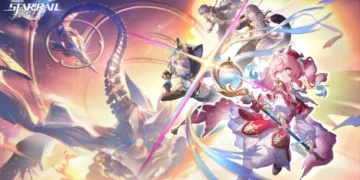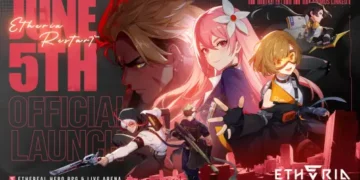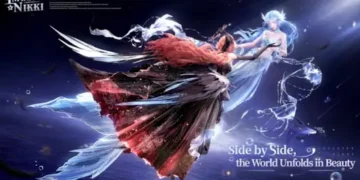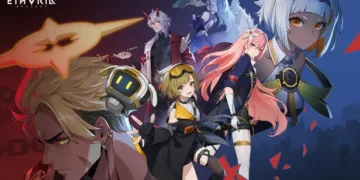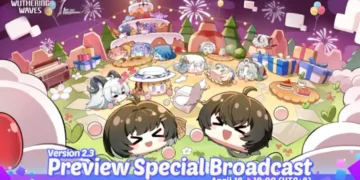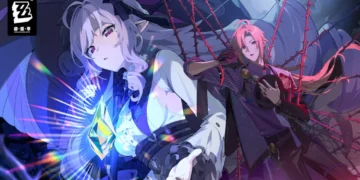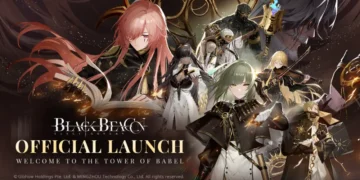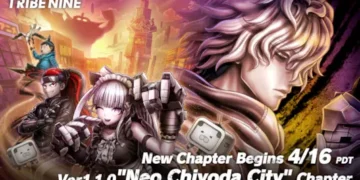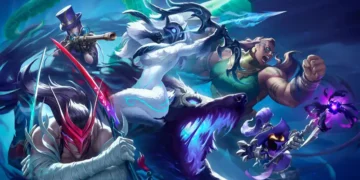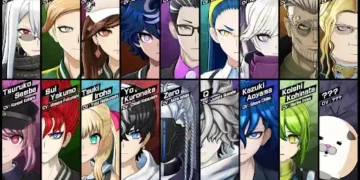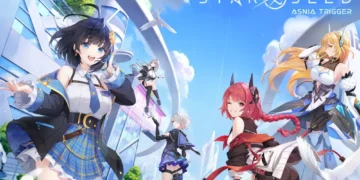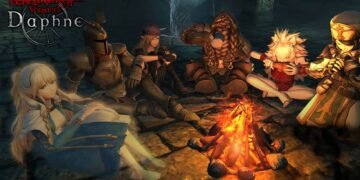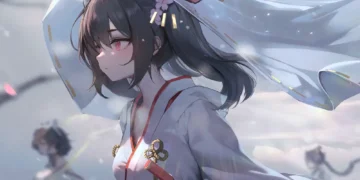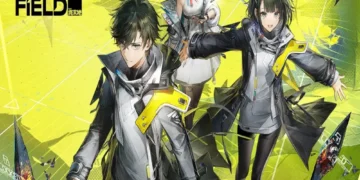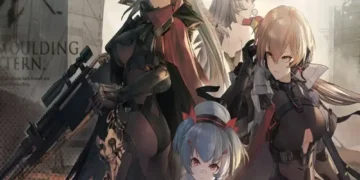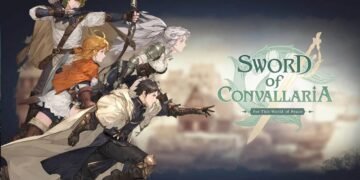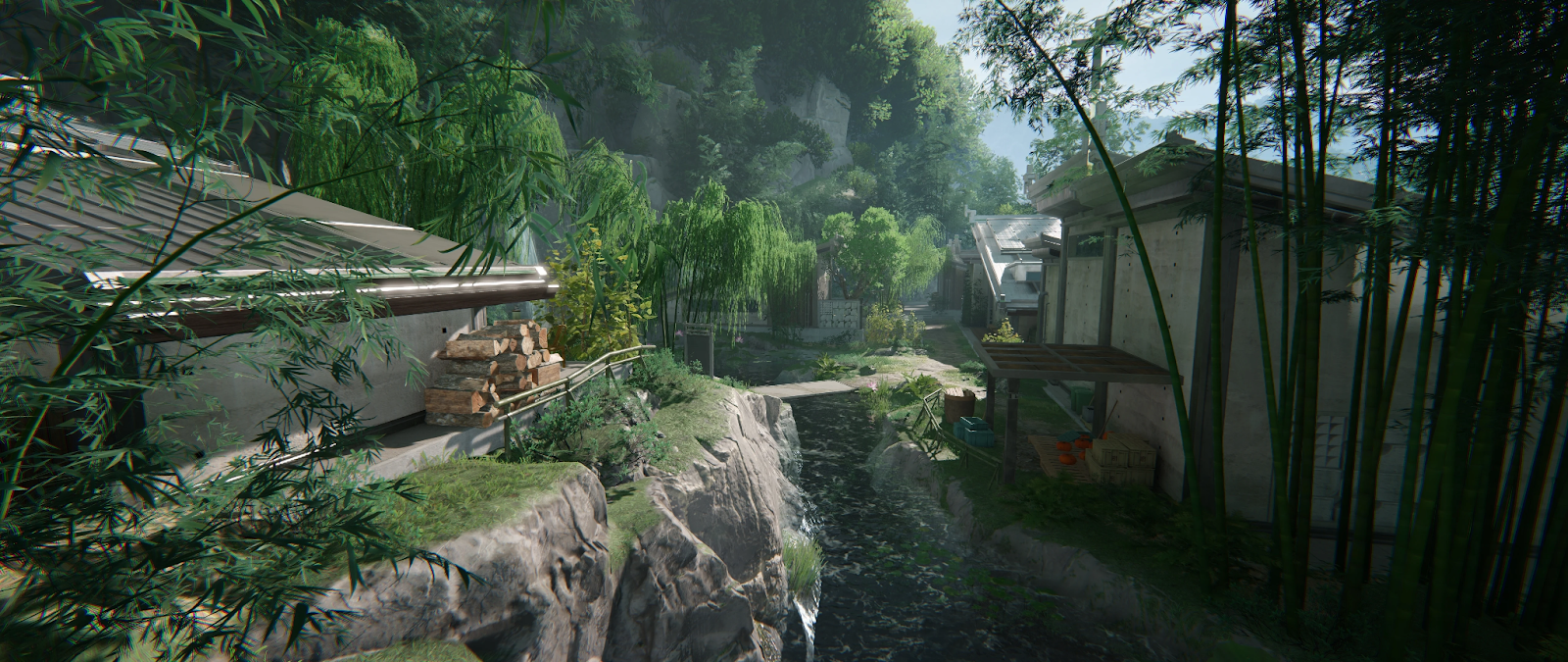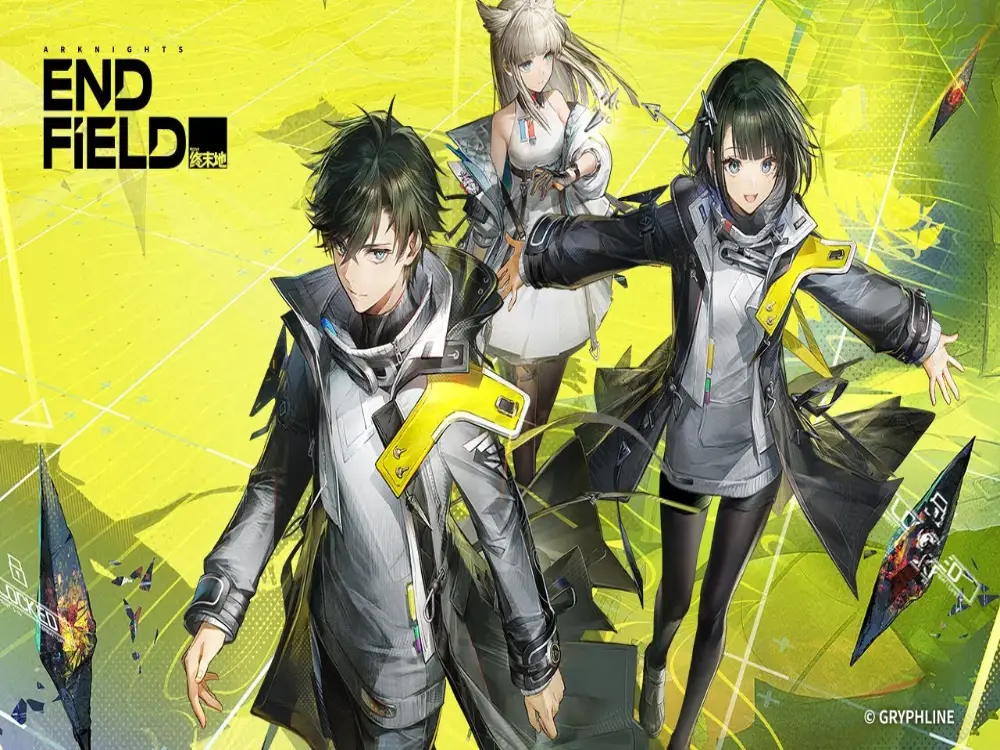
On January 6th, an interview took place between GCORES and Light Zhong and Yifeng Huang, developers from HYPERGRYPH, the studio behind the new title Arknights Endfield. Below, we highlight the key points from the interview.
Arknights Endfield interview content
New trailer and announcement of Arknights Endfield
The day after the presentation of the trailer, a 15-minute demo of the game was released, which showed significant graphical improvements and modifications from the previous technical test, leaving all the players who saw it live satisfied.
Interview with the developers
- Improvements in Combat and Gameplay:
- The combat system has been significantly refined, offering a more polished team-based ARPG experience.
- Character and enemy animations have been improved, and the combat camera has been optimized.
- The skill system has been revamped, removing the need for manual aiming. The resource for using skills regenerates over time and can be restored through combat actions, adding a tactical element.
- New Mechanics:
- The combo skill has been introduced, allowing special abilities to be activated under certain conditions, adding more tactical depth.
- Characters can now actively move to evade enemy attacks, improving interaction during battles.
Why completely revise the combat system? What is the reason for the change in direction?
We aim to create dynamic tactical combat with a focus on smooth cooperation between characters, using advanced AI to make team members an active and realistic part of the combat experience.
- Real-time Tactical Combat:
- Real-time combat with a strong tactical component. Players must make strategic decisions both before and during the battle, such as energy allocation for abilities, ability launch sequences, and combo activation.
- AI as the core of team cooperation:
- A major technical challenge is finding the balance for AI-controlled teammates. If they are too independent, they can undermine strategic depth, but if they are too passive or slow, battles can become dull and less exciting. The goal is for teammates not to interfere with the camera or gameplay, but still remain useful and realistic.
- Yifeng Huang, from the development team, mentions that they are working on improving character interaction with the player and the environment, ensuring that teammates feel like helpful allies and not just passive entities in combat.
- Focus on team combat:
- Arknights Endfield aims to deepen this feature in a way that is not commonly seen. The team is committed to finding an effective and exciting formula through ongoing work.
Could you tell us about the level and environment design?
Many areas of the game feature unique mechanics and stunning environments. There will be a wide variety of dungeons and mini-games, including parkour challenges, platforming sequences, and puzzles to solve.
One of the game’s main features is the base and factory building system, centered around an industrial complex. This system has been optimized and expanded in the latest version, improving the building process and offering a top-down view with more quick options and more intuitive controls to streamline base creation.
The new version also introduces combat installations and a new outpost defense mode, where “towers” play a crucial role. This makes base-building a central aspect of combat, not just a progression and reward system. While this tower defense system may evoke nostalgia for veteran players, it also introduces limitations. Turrets and other combat installations must be strategically placed on the map as they have placement limits and consume energy, preventing players from covering the entire map with these structures and relying solely on them.
Is managing an industrial complex too overwhelming for an anime game?
We believe that, despite the market trend moving away from gameplay as the main focus, this is a result of current market dynamics and not a sign that players are uninterested in new experiences. Offering fresh, innovative game systems has been a priority since the launch of Arknights.
The industrial complex in Endfield is an expansive system that will serve as a foundation for future innovations within the game. The team is confident that the complexity and scalability of this system can attract a broader audience than expected. They compare the game to successful titles like Factorio, Dyson Sphere Program, and Minecraft industrial mods, which have been validated by the market. According to the team, the key is to implement these systems correctly, ensuring an accessible learning curve and an intuitive experience for players.
Will we continue with the attractive art and world connection as we did in Arknights?
In Arknights: Endfield, the development team faces a considerable challenge transitioning from a 2D game like Arknights to a 3D environment, especially when it comes to maintaining the coherence and immersion that characterized the original title. In the 2D game, players deeply explore characters and the narrative, but the shift to 3D requires a much more careful approach in representing the characters, their designs, the environments, and movements to achieve the same level of cohesion and immersion.
Despite having limited experience in 3D rendering, the Endfield team has made significant progress in this area. Last year’s technical test was well received by players, who praised the intricate details of the characters and the overall quality of the 3D execution, although some areas for improvement were suggested. In the recent beta test, noticeable improvements in the graphics have sparked curiosity about how the team has managed to transfer HYPERGRYPH’s artistic skill to the 3D world of Endfield.
One of the team’s biggest challenges has been integrating anime-style characters, which traditionally use cel shading, into a more realistic 3D environment without them feeling out of place. This has required a careful balance between physics-based rendering (PBR) and non-photorealistic rendering (NPR), which is crucial for creating a consistent visual style.
We have worked hard to harmonize the game’s visual elements, even in seemingly simple details. For example, a realistic concrete wall in the game: its textures, stains, and colors are not an exact replica of a real concrete wall, but have been carefully processed and adjusted through an iterative evaluation process. This meticulous artistic work aims to ensure that visual elements do not look out of place, creating a believable physical space that also leaves room for the player’s imagination.
For instance, Endfield character designs will highlight differences in factions and social status. Outfits and weapons will be more closely tied to the character’s class and profession. During the technical test, Perlica’s weapon was a standard staff, but it has been changed to a feather-shaped wand. This is because we changed the type of weapon for the mage class. And since Perlica is the player’s assistant, the new design should also emphasize this role. The wand can be used as a fountain pen to sign documents or take notes. It can also transform into a tablet. We’ve added many details like this.
What can we find in the art that differentiates it from Arknights?
The character design in Endfield follows the Arknights approach, using a precise balance of tones such as black, white, and gray, accented with bright and saturated colors. This approach not only aims to create a unique identity for each character but also to maintain structural coherence in the representation of factions. Additionally, special emphasis is placed on the combination of materials and textures to highlight each character’s individuality. One of the technical innovations that has been implemented is the dynamic simulation of anime-style brush strokes on the 3D models, which allows the visual effect to change according to lighting and perspective, creating a sense of depth and dimensionality similar to traditional Arknights art.
Regarding integration with the environment, Endfield characters feature a degree of realism in their outfits, weapon designs, and rendering style. The team is proud to have achieved what they call “anime realism,” using cold, natural color palettes and realistic textures, making their characters stand out compared to other 3D anime games on the market. The wardrobe designs are not only functional but are also inspired by a post-apocalyptic and practical environment, incorporating science fiction elements.
A clear example of this blend of realism and unique aesthetics is the characters’ outfits. Xaihi’s elaborate lolita dress, for instance, incorporates modern and science fiction details such as quick-release clasps and high-tech materials. Meanwhile, Chen Qianyu’s outfit merges traditional Chinese cultural elements with metal and PVC textures, creating a design that is both culturally rich and visually futuristic.
Will we continue with the appealing art and world connection as we did in Arknights?
Dijiang is a space station and serves as the heart of Endfield Industries. This location offers various gameplay functions, such as combat simulations and resource gathering. Players can interact with the Endfield operators, listen to casual conversations among the staff, or simply explore the station at their own pace, enjoying the detailed environment.
Why this visual direction?
From the initial technical test to the latest version, Arknights: Endfield has made impressive technical progress, exceeding expectations in terms of its audiovisual experience with great stability and a high level of polish. This has raised questions about the engine driving the game and the technical challenges the team has overcome.
The engine used in Endfield is Unity, but the development team has made significant modifications to adapt it to the needs of the game. They redesigned nearly from scratch both the low-level rendering framework and high-level rendering processes. Although they maintained the basic architecture of Unity, the graphics rendering system underwent a complete overhaul, implementing a data-oriented ECS (Entity Component System) architecture, which greatly improved processing efficiency. Additionally, the graphics API was completely revised to meet the game’s demanding performance requirements.
One of the most significant advances was the implementation of seamless maps. In the previous technical test, loading screens when moving between stages broke the player’s immersion. For the beta test, these interruptions were completely eliminated, achieved through a complete restructuring of the scene sequence, redesigning the underlying framework, and developing internal technologies such as a large-scale terrain system, virtual texture mapping, and seamless loading techniques. This allowed for the creation of a vast, continuous sandbox environment, especially in the Valley IV map, where players can freely explore without loading pauses.
The team also developed cross-platform lighting technology, ensuring dynamic lighting and shadows across the entire scene, even in distant landscapes, something many games fail to maintain, as dynamic shadows tend to blur in distant views.
As for the sound design, a specialized Foley team was formed to record and recreate real sounds like the creaking of leather, the metallic sound, and the movement of fabric with the wind. These sounds are dynamically integrated into the game, synchronizing with character actions, emotions, and environmental changes, ensuring an immersive and realistic auditory experience.
And as a final question, what do you hope to achieve with Arknights: Endfield?
Players are looking for something new and exciting, which is why our team strives to meet that demand by combining familiar mechanics with innovations, such as merging factory simulation with RPG elements. In a competitive market, standing out requires creating something unique that distinguishes itself from the rest.
We also believe that innovation not only satisfies the creator’s aspirations but also the players’, who are looking for new and surprising experiences. Despite the challenges, the team is motivated by the passion to create something truly special, and while the process is tough, it is incredibly rewarding.
As a final reflection, creating a game we deeply believe in and that resonates with players is difficult but essential. We will strive to satisfy all players as much as possible, and we eagerly await your feedback from the upcoming beta, as it will be essential to perfecting Endfield. We hope you enjoy this new chapter of the Arknights universe with us.
Here ends the interview about Arknights: Endfield. We look forward to your feedback and hearing what you enjoyed the most. Below, we leave you the official website for more detailed information about the game.

On January 6th, an interview took place between GCORES and Light Zhong and Yifeng Huang, developers from HYPERGRYPH, the studio behind the new title Arknights Endfield. Below, we highlight the key points from the interview.
Arknights Endfield interview content
New trailer and announcement of Arknights Endfield
The day after the presentation of the trailer, a 15-minute demo of the game was released, which showed significant graphical improvements and modifications from the previous technical test, leaving all the players who saw it live satisfied.
Interview with the developers
- Improvements in Combat and Gameplay:
- The combat system has been significantly refined, offering a more polished team-based ARPG experience.
- Character and enemy animations have been improved, and the combat camera has been optimized.
- The skill system has been revamped, removing the need for manual aiming. The resource for using skills regenerates over time and can be restored through combat actions, adding a tactical element.
- New Mechanics:
- The combo skill has been introduced, allowing special abilities to be activated under certain conditions, adding more tactical depth.
- Characters can now actively move to evade enemy attacks, improving interaction during battles.
Why completely revise the combat system? What is the reason for the change in direction?
We aim to create dynamic tactical combat with a focus on smooth cooperation between characters, using advanced AI to make team members an active and realistic part of the combat experience.
- Real-time Tactical Combat:
- Real-time combat with a strong tactical component. Players must make strategic decisions both before and during the battle, such as energy allocation for abilities, ability launch sequences, and combo activation.
- AI as the core of team cooperation:
- A major technical challenge is finding the balance for AI-controlled teammates. If they are too independent, they can undermine strategic depth, but if they are too passive or slow, battles can become dull and less exciting. The goal is for teammates not to interfere with the camera or gameplay, but still remain useful and realistic.
- Yifeng Huang, from the development team, mentions that they are working on improving character interaction with the player and the environment, ensuring that teammates feel like helpful allies and not just passive entities in combat.
- Focus on team combat:
- Arknights Endfield aims to deepen this feature in a way that is not commonly seen. The team is committed to finding an effective and exciting formula through ongoing work.
Could you tell us about the level and environment design?
Many areas of the game feature unique mechanics and stunning environments. There will be a wide variety of dungeons and mini-games, including parkour challenges, platforming sequences, and puzzles to solve.
One of the game’s main features is the base and factory building system, centered around an industrial complex. This system has been optimized and expanded in the latest version, improving the building process and offering a top-down view with more quick options and more intuitive controls to streamline base creation.
The new version also introduces combat installations and a new outpost defense mode, where “towers” play a crucial role. This makes base-building a central aspect of combat, not just a progression and reward system. While this tower defense system may evoke nostalgia for veteran players, it also introduces limitations. Turrets and other combat installations must be strategically placed on the map as they have placement limits and consume energy, preventing players from covering the entire map with these structures and relying solely on them.
Is managing an industrial complex too overwhelming for an anime game?
We believe that, despite the market trend moving away from gameplay as the main focus, this is a result of current market dynamics and not a sign that players are uninterested in new experiences. Offering fresh, innovative game systems has been a priority since the launch of Arknights.
The industrial complex in Endfield is an expansive system that will serve as a foundation for future innovations within the game. The team is confident that the complexity and scalability of this system can attract a broader audience than expected. They compare the game to successful titles like Factorio, Dyson Sphere Program, and Minecraft industrial mods, which have been validated by the market. According to the team, the key is to implement these systems correctly, ensuring an accessible learning curve and an intuitive experience for players.
Will we continue with the attractive art and world connection as we did in Arknights?
In Arknights: Endfield, the development team faces a considerable challenge transitioning from a 2D game like Arknights to a 3D environment, especially when it comes to maintaining the coherence and immersion that characterized the original title. In the 2D game, players deeply explore characters and the narrative, but the shift to 3D requires a much more careful approach in representing the characters, their designs, the environments, and movements to achieve the same level of cohesion and immersion.
Despite having limited experience in 3D rendering, the Endfield team has made significant progress in this area. Last year’s technical test was well received by players, who praised the intricate details of the characters and the overall quality of the 3D execution, although some areas for improvement were suggested. In the recent beta test, noticeable improvements in the graphics have sparked curiosity about how the team has managed to transfer HYPERGRYPH’s artistic skill to the 3D world of Endfield.
One of the team’s biggest challenges has been integrating anime-style characters, which traditionally use cel shading, into a more realistic 3D environment without them feeling out of place. This has required a careful balance between physics-based rendering (PBR) and non-photorealistic rendering (NPR), which is crucial for creating a consistent visual style.
We have worked hard to harmonize the game’s visual elements, even in seemingly simple details. For example, a realistic concrete wall in the game: its textures, stains, and colors are not an exact replica of a real concrete wall, but have been carefully processed and adjusted through an iterative evaluation process. This meticulous artistic work aims to ensure that visual elements do not look out of place, creating a believable physical space that also leaves room for the player’s imagination.
For instance, Endfield character designs will highlight differences in factions and social status. Outfits and weapons will be more closely tied to the character’s class and profession. During the technical test, Perlica’s weapon was a standard staff, but it has been changed to a feather-shaped wand. This is because we changed the type of weapon for the mage class. And since Perlica is the player’s assistant, the new design should also emphasize this role. The wand can be used as a fountain pen to sign documents or take notes. It can also transform into a tablet. We’ve added many details like this.
What can we find in the art that differentiates it from Arknights?
The character design in Endfield follows the Arknights approach, using a precise balance of tones such as black, white, and gray, accented with bright and saturated colors. This approach not only aims to create a unique identity for each character but also to maintain structural coherence in the representation of factions. Additionally, special emphasis is placed on the combination of materials and textures to highlight each character’s individuality. One of the technical innovations that has been implemented is the dynamic simulation of anime-style brush strokes on the 3D models, which allows the visual effect to change according to lighting and perspective, creating a sense of depth and dimensionality similar to traditional Arknights art.
Regarding integration with the environment, Endfield characters feature a degree of realism in their outfits, weapon designs, and rendering style. The team is proud to have achieved what they call “anime realism,” using cold, natural color palettes and realistic textures, making their characters stand out compared to other 3D anime games on the market. The wardrobe designs are not only functional but are also inspired by a post-apocalyptic and practical environment, incorporating science fiction elements.
A clear example of this blend of realism and unique aesthetics is the characters’ outfits. Xaihi’s elaborate lolita dress, for instance, incorporates modern and science fiction details such as quick-release clasps and high-tech materials. Meanwhile, Chen Qianyu’s outfit merges traditional Chinese cultural elements with metal and PVC textures, creating a design that is both culturally rich and visually futuristic.
Will we continue with the appealing art and world connection as we did in Arknights?
Dijiang is a space station and serves as the heart of Endfield Industries. This location offers various gameplay functions, such as combat simulations and resource gathering. Players can interact with the Endfield operators, listen to casual conversations among the staff, or simply explore the station at their own pace, enjoying the detailed environment.
Why this visual direction?
From the initial technical test to the latest version, Arknights: Endfield has made impressive technical progress, exceeding expectations in terms of its audiovisual experience with great stability and a high level of polish. This has raised questions about the engine driving the game and the technical challenges the team has overcome.
The engine used in Endfield is Unity, but the development team has made significant modifications to adapt it to the needs of the game. They redesigned nearly from scratch both the low-level rendering framework and high-level rendering processes. Although they maintained the basic architecture of Unity, the graphics rendering system underwent a complete overhaul, implementing a data-oriented ECS (Entity Component System) architecture, which greatly improved processing efficiency. Additionally, the graphics API was completely revised to meet the game’s demanding performance requirements.
One of the most significant advances was the implementation of seamless maps. In the previous technical test, loading screens when moving between stages broke the player’s immersion. For the beta test, these interruptions were completely eliminated, achieved through a complete restructuring of the scene sequence, redesigning the underlying framework, and developing internal technologies such as a large-scale terrain system, virtual texture mapping, and seamless loading techniques. This allowed for the creation of a vast, continuous sandbox environment, especially in the Valley IV map, where players can freely explore without loading pauses.
The team also developed cross-platform lighting technology, ensuring dynamic lighting and shadows across the entire scene, even in distant landscapes, something many games fail to maintain, as dynamic shadows tend to blur in distant views.
As for the sound design, a specialized Foley team was formed to record and recreate real sounds like the creaking of leather, the metallic sound, and the movement of fabric with the wind. These sounds are dynamically integrated into the game, synchronizing with character actions, emotions, and environmental changes, ensuring an immersive and realistic auditory experience.
And as a final question, what do you hope to achieve with Arknights: Endfield?
Players are looking for something new and exciting, which is why our team strives to meet that demand by combining familiar mechanics with innovations, such as merging factory simulation with RPG elements. In a competitive market, standing out requires creating something unique that distinguishes itself from the rest.
We also believe that innovation not only satisfies the creator’s aspirations but also the players’, who are looking for new and surprising experiences. Despite the challenges, the team is motivated by the passion to create something truly special, and while the process is tough, it is incredibly rewarding.
As a final reflection, creating a game we deeply believe in and that resonates with players is difficult but essential. We will strive to satisfy all players as much as possible, and we eagerly await your feedback from the upcoming beta, as it will be essential to perfecting Endfield. We hope you enjoy this new chapter of the Arknights universe with us.
Here ends the interview about Arknights: Endfield. We look forward to your feedback and hearing what you enjoyed the most. Below, we leave you the official website for more detailed information about the game.


